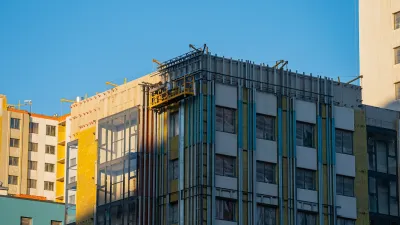The quality of life or residents might be the best way to measure the benefits of green building programs, according to the president and CEO of the U.S. Green Building Council.

Mahesh Ramanujam, president and CEO of the U.S. Green Building Council, writes for Smart Cities Dive to make the case for improvements in building construction for the benefit of quality of life in the United States.
Ramanujam uses the example of Atlanta to begin the story:
Utility costs are a very real concern in Atlanta, where residents spend on average 48% of their income on housing, utilities and transportation. And for the more than 336,000 households whose incomes are at or below the poverty line, that percentage can be even higher.
Building better, according to Ramanujam, can be a powerful way to improve quality of life. "Better homes, better schools, better hospitals, better offices." In fact, writes Ramanujam, the true measure of success of buildings won't necessarily be measured in terms of environmental outcomes, but in the health and well-being of residents.
FULL STORY: Raising the living standard in cities requires us to build better

Planetizen Federal Action Tracker
A weekly monitor of how Trump’s orders and actions are impacting planners and planning in America.

Map: Where Senate Republicans Want to Sell Your Public Lands
For public land advocates, the Senate Republicans’ proposal to sell millions of acres of public land in the West is “the biggest fight of their careers.”

Restaurant Patios Were a Pandemic Win — Why Were They so Hard to Keep?
Social distancing requirements and changes in travel patterns prompted cities to pilot new uses for street and sidewalk space. Then it got complicated.

Platform Pilsner: Vancouver Transit Agency Releases... a Beer?
TransLink will receive a portion of every sale of the four-pack.

Toronto Weighs Cheaper Transit, Parking Hikes for Major Events
Special event rates would take effect during large festivals, sports games and concerts to ‘discourage driving, manage congestion and free up space for transit.”

Berlin to Consider Car-Free Zone Larger Than Manhattan
The area bound by the 22-mile Ringbahn would still allow 12 uses of a private automobile per year per person, and several other exemptions.
Urban Design for Planners 1: Software Tools
This six-course series explores essential urban design concepts using open source software and equips planners with the tools they need to participate fully in the urban design process.
Planning for Universal Design
Learn the tools for implementing Universal Design in planning regulations.
Heyer Gruel & Associates PA
JM Goldson LLC
Custer County Colorado
City of Camden Redevelopment Agency
City of Astoria
Transportation Research & Education Center (TREC) at Portland State University
Camden Redevelopment Agency
City of Claremont
Municipality of Princeton (NJ)





























